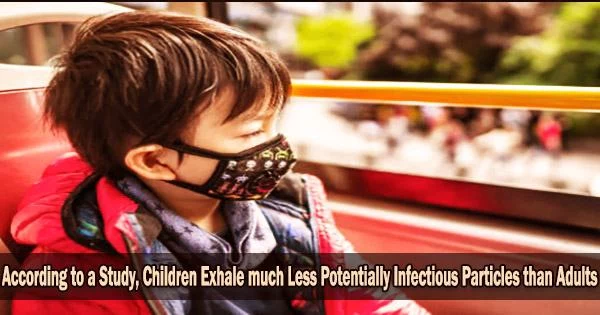At least for the tiny respiratory droplets that are mostly formed in the lungs, children exhale much less potentially infectious particles than adults. A study from the Max Planck Institutes for Dynamics and Self-Organization and for Chemistry, in association with the University Göttingen Medical Center, made this significant discovery.
Using measurements from 132 individuals of all ages, the researchers examined the concentrations of aerosol particles and droplets released with the breath during breathing, speaking, singing, and yelling. The results contribute to our understanding of how to stop the spread of diseases like COVID-19 and the flu.
Particles inhaled by diseased people can frequently spread infectious diseases. However, depending on where the aerosol comes from in the respiratory system, the size of these particles varies substantially. PM5, or particles smaller than five microns, or five thousandths of a millimeter, are mostly formed in the lung.
In contrast, bigger particles are produced in the upper respiratory tract. As the measurements showed, children exhale far less smaller particles than adults.
“We found that the concentration of small particles below five microns increases with age and is particularly low in children. As a result, adults are much more likely to trigger spreading if the infection is only in the lower respiratory tract,” says Mohsen Bagheri, research group leader at the Max Planck Institute for Dynamics and Self-Organization.
The study found that toddlers and adults both disseminate bigger particles that start in the throat to the same degree. The amount of inhaled particles did not correlate with a person’s gender, weight, level of physical activity, or smoking habits, according to the study.
The researchers collected information from 132 healthy individuals for their extensive investigation. The study also included children and teenagers aged five to 18 about whom scant information was provided. They measured the complete range of inhaled particle sizes from a tenth of a micrometer to a quarter of a millimeter using a variety of devices set up in a clean environment.
We found that the concentration of small particles below five microns increases with age and is particularly low in children. As a result, adults are much more likely to trigger spreading if the infection is only in the lower respiratory tract.
Mohsen Bagheri
For a total of 20 minutes, the participants engaged in a variety of vocalization exercises, including singing, speaking, and yelling.
“Vocalization and age are shown to be independent risk factors for particle production,” reports Simone Scheithauer from the Department of Infection Control and Infectious diseases at the University Göttingen Medical Center.
The volume of the exhaled particles determines potential infection risk
Although the majority of the particles in human drops and aerosols are small, the majority of the overall volume that potentially carry pathogens is made up of larger particles.
“If the pathogen mainly resides in the upper respiratory tract, the large particles are by far the main transmitter of the disease,” explains Eberhard Bodenschatz, director at the Max Planck Institute for Dynamics and Self-Organization.
“It is thus important to consider the localization of the infectious particle in the respiratory tract to decide on appropriate protection,” he continues. “For example, the current Omicron variant of the Coronavirus seems to be localized more to the upper respiratory tract and this is why even simple filtering face masks are a great protection.”
Small particles, on the other hand, will be the predominant means of transmission for infectious diseases that are mostly lung-based. According to the study, youngsters are less prone to spread such diseases than adults because their production rises with age.
Wearing properly fitting, high-efficiency facial masks can thus be an efficient way to stop the spread of lung diseases through the air, especially for adults.
















